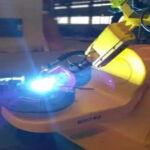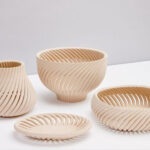Metal manufacturing is subtractive in nature. In processes such as cutting, grinding, and drilling, part of the basic material becomes waste, which requires a system for waste treatment, disposal, and possible recycling.
Some “additive” processes (such as casting and molding) have existed for hundreds of years, but in the past two decades, especially in the past few years, the development of additive manufacturing (AM) has emerged. These innovations Provide part designers with functions that were once thought impossible.
Metal AM basics
Table of Contents
Over the years, the industry has used a large number of acronyms to describe a series of AM equipment processes, many of which have registered trademarks. Finally, ASTM standardized the term through its ASTM F2792 standard.
The two common metal AM forms cited in the standard are powder bed fusion (PBF) and directed energy deposition (DED). Energy depends on the system. Of course, many machines use lasers, but other machines use electron beams or electric arcs. Many of the latest developments, especially those related to DED, involve the use of high-power lasers.
Both PBF and DED can manufacture a variety of parts, including parts with complex designs. Many products have functions such as internal cooling channels, which cannot be manufactured in any other way.
In PBF, the patterned layer is laser cured and then dropped to allow the powder to flow or deposit again to form the next layer. PBF forms complex, close to the final shape or even the final shape of the finish.
In DED, powder or wire is deposited layer by layer, and each molten layer is accumulated on the substrate. The deposited materials can include steel, stainless steel, aluminum, nickel and cobalt-based alloys, titanium, and many other materials.
Because powdered metals are manufactured in different ways, they come in many varieties, and because they can be mixed in different ways, they allow manufacturers to fine-tune the material properties. On the other hand, the cost of the metal core wire is lower, the deposition rate is higher, and there is no waste. Line feeding DED can provide almost 100% material utilization.
DED can be used to manufacture large parts and perform parts repair, and many of its applications involve high material deposition rates. In fact, some wire-fed DED processes can deposit up to 330 g/min of stainless steel, which is about 10 times the typical deposition rate using PBF. Nevertheless, the dimensional accuracy and surface roughness of DED are about 10 times worse than that of PBF. DED can achieve close to the final shape, but usually requires some type of finishing, such as milling or grinding. Even so, the high deposition rate of DED usually makes it more economical for large short-term components.

Publish or print?
Consider a big part, that is before the metal AM is cast and finished. If it is a high-volume part, casting may still be the most practical and cost-effective manufacturing method. But what if the run is short? In the time required to manufacture the core of the casting, DED has produced parts with just the right molding quality.
Moreover, the parts produced by DED will not suffer from possible metallurgical problems caused by casting, such as micro or large holes, cold shut or overlap, and scratches. A well-designed DED system with closed-loop feedback to the laser source should be able to produce most parts with good interlayer consolidation and almost no impurities.
Processing head progress
The standard industrial DED machine includes a material deposition head, motion system (multi-axis or robot), laser source, safety shield and exhaust system. The machining head travels the programmed tool path according to the CAD data of the part.
However, the development of DED continues, and the deposition rate continues to increase. The goal is to heat and melt the wire uniformly and quickly without deformation. For many applications, this has become a reality, thanks in part to advances in the processing head.
Some DED applications can use laser welding heads, but the way that this welding head feeds the welding wire has limitations. The conventional laser welding head feeds the welding wire from the side. The direction of wire feeding affects the transfer of droplets and the quality of deposits. The purpose is to keep the molten material at the end of the welding wire flowing smoothly and continuously into the molten pool on the workpiece, and with DED, if the processing head has only one wire feed direction, sometimes this flow cannot be optimized.
Retroreflection may be another challenge. DED requires multiple tool center points for path programming, which makes the reflection of light bounced off the wire truly possible, which is not taken into account by typical laser welding heads.
Finally, the transmission optics of laser welding heads are usually limited to a laser power of 6 kW. Not long ago, 6 kW was considered a “high power” industrial laser application. Today, some DED applications use 10 to 20 kW of laser power.
In DED, different materials benefit from different wire feeding directions and positions. When processing on titanium and nickel-based materials, pre-feeding the welding wire at the leading edge of the molten pool tends to increase the deposition rate and improve the surface finish. For aluminum, the experiment revealed the opposite. In other words, the feedback wire is more effective and stable. Generally, the best wire feeding direction to produce a good-shaped DED deposit depends on the material, so it has the advantage of an omnidirectional deposition head.
This omnidirectional head with coaxial hot wire feed can handle 20 kW or even 30 kW of laser power. In this case, the directly cooled reflective optics can minimize focus shift. Some magnetic heads have internal optics that divide the high-power laser beam into three independent focal points of equal power, with each focal point spaced around a coaxial wire feed line. This arrangement facilitates feeding from different directions depending on the material, the diameter of the molten pool and other application variables.
These three spots can be placed on top of each other, combining their energy with the full power of the laser. Or, they can be placed in a position that is conducive to a specific directionality (that is, the wire feeding direction). For example, two points can be on top of each other, while the third point lags behind the wire.
Expanding the additive footprint
DED is very sensitive to process changes, which is why online monitoring and control are so important. The ultimate goal is to improve the stability of the deposition and eventually expand the potential of metal additive manufacturing to new areas, including truly huge parts, which until recently were impractical or complete for any additive manufacturing process impossible.
Business case for large metal AM
Imagine a large rocket nozzle whose height and width are measured in feet or meters. At first glance, you might think it is a casting, but it is not. Instead, it is manufactured cumulatively in a large-scale Directed Energy Deposition (DED) system.
Why do they need to be accurately manufactured by additive, instead of casting and finishing? There are two reasons: the need for quick turnaround, and the material grade of the nozzle is extremely expensive. The cost of starting from the billet block is too high, and the requirements of the steel grade are too high, and the processing cost is high.
This leaves metal additive manufacturing, namely powder bed fusion (PBF) or DED. The nozzle is many feet tall and wide. For traditional PBF, the nozzle is too large, and the part requires almost zero porosity in the finished material.
Therefore, manufacturers have turned to high-power, laser-based line-fed DED systems using three-point deposition heads. The parts come out of the machine and are ready for finishing. The resulting material is cast grade but with improved metallurgical quality.
If the nozzle is usually processed from a blank, finishing only accounts for 20% of the total time. The time saved for each part is not in minutes or hours, but in days. Moreover, since the price of scrap steel of rare metals is about 1/8 of the price of the entire billet, additive manufacturing can save a lot of costs by improving material utilization (ie reducing material loss), and about 97% of the consumed materials are used for manufacturing Components.
Link to this article: Metal additive manufacturing reduces costs and saves time for creating large parts
Reprint Statement: If there are no special instructions, all articles on this site are original. Please indicate the source for reprinting:https://www.cncmachiningptj.com/,thanks!
 3, 4 and 5-axis precision CNC machining services for aluminum machining, beryllium, carbon steel, magnesium, titanium machining, Inconel, platinum, superalloy, acetal, polycarbonate, fiberglass, graphite and wood. Capable of machining parts up to 98 in. turning dia. and +/-0.001 in. straightness tolerance. Processes include milling, turning, drilling, boring, threading, tapping, forming, knurling, counterboring, countersinking, reaming and laser cutting. Secondary services such as assembly, centerless grinding, heat treating, plating and welding. Prototype and low to high volume production offered with maximum 50,000 units. Suitable for fluid power, pneumatics, hydraulics and valve applications. Serves the aerospace, aircraft, military, medical and defense industries.PTJ will strategize with you to provide the most cost-effective services to help you reach your target,Welcome to Contact us ( [email protected] ) directly for your new project.
3, 4 and 5-axis precision CNC machining services for aluminum machining, beryllium, carbon steel, magnesium, titanium machining, Inconel, platinum, superalloy, acetal, polycarbonate, fiberglass, graphite and wood. Capable of machining parts up to 98 in. turning dia. and +/-0.001 in. straightness tolerance. Processes include milling, turning, drilling, boring, threading, tapping, forming, knurling, counterboring, countersinking, reaming and laser cutting. Secondary services such as assembly, centerless grinding, heat treating, plating and welding. Prototype and low to high volume production offered with maximum 50,000 units. Suitable for fluid power, pneumatics, hydraulics and valve applications. Serves the aerospace, aircraft, military, medical and defense industries.PTJ will strategize with you to provide the most cost-effective services to help you reach your target,Welcome to Contact us ( [email protected] ) directly for your new project.
Link to this article:Metal additive manufacturing reduces costs and saves time for creating large parts
Reprint Statement: If there are no special instructions, all articles on this site are original. Please indicate the source for reprinting.:Cnc Machining,Thank!^^








